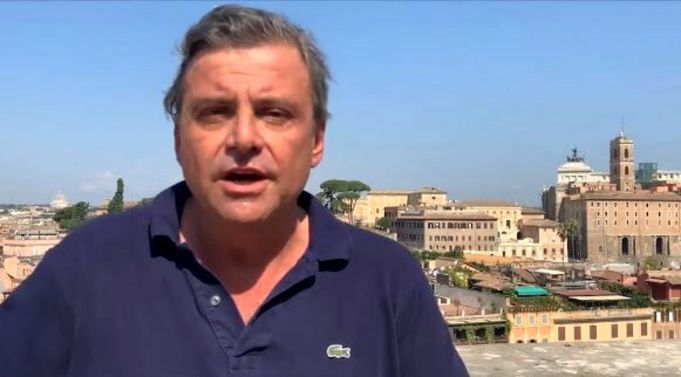Calenda proposes one-stop Ancient Rome Museum on Capitoline Hill to improve tourist experience.
Carlo Calenda, one of the main candidates in the race to become Rome's next mayor, has launched a radical idea to create a single, giant museum dedicated to ancient Rome.
Under Calenda's plan, the city hall offices would be moved from the Campidoglio, with the vacated Palazzo Senatorio becoming part of the adjoining Capitoline Museums complex to form the 'Museo Unico per la Roma Antica.'
The new space would be used to merge treasures from several museums in Rome whose collections are in the hands of both the city and the state, including Palazzo Altemps and Palazzo Massimo (state-run) and the Museum of Roman Civilisation (city-run, located in the EUR suburb and long closed for renovation).
The Capitoline Museums, in addition to being the oldest public museums in the world - dating back to 1471 - is the jewel in the crown of Rome's municipal-run museums.
However Calenda claims that it is "not a museum, in the modern sense of the term, but a collection of collections exhibited in a confused and unintelligible way."

The mayoral candidate for the liberal Azione party says his plan would create a "complete, modern and usable museum itinerary that becomes the natural destination for those who want to learn about Roman history."
Calenda argues that, as it stands, tourists keen to understand the history of Rome must "visit seven different museums, located kilometres from each other" under a system that is both "unattractive" and "difficult" for visitors.
"It takes 20 minutes to go from the Capitoline Museums to the National Roman Museum in Palazzo Massimo" - he says - "It would take 47 minutes to go from the Capitoline Museums to the Museum of Roman Civilisation, the only one with educational content, which has been closed for years.”
Calenda also says that "unlike all the other European capitals, Rome does not have a large public museum representative of the city", citing Paris, London, Stockholm and Amsterdam as examples.
He asserts that the new complex could become "the largest museum in Rome, surpassing the Vatican Museums and considerably approaching the size of other large international museums such as the Louvre."
As part of the shake-up, he proposes to merge the Capitoline Museums' collection of paintings (including works by Caravaggio and Guercino) with that of Palazzo Barberini (the national collection of ancient art) "in order to concentrate the pictorial works of international importance in a single site."
Furthermore Calenda proposes to “entrust the entire archaeological area of the Forums and the Palatine to the national superintendence", in addition to preparing "an ambitious excavation plan."
Reaction
Calenda's plan has aroused interest among the general public but has been roundly slammed by experts from the world of culture who accuse him of wanting to "cherry pick" or "loot" treasures from other museums.
Art historian Tomaso Montanari, wrote on Twitter: "He wants to merge museums, erasing history and the first public museum in the world. Like installing glass and a roof on the Colosseum, because it is so old, broken and uncomfortable."
Flaminia Gennari Santori, director of Palazzo Barberini, described the proposal as "senseless, so absurd that it's laughable."
Art historian Rita Borioni said: "The reason why the Capitoline Museums cannot have the same appeal as the Vatican Museums is not due to its size but rather the fact that it doesn't have Michelangelo's Sistine Chapel, Raphael's Rooms, the Lacoonte."
Not everyone is against the idea, however, with Calenda's plan described as "excellent" by prominent art critic Vittorio Sgarbi.
For his part Calenda says he "was expecting the controversy", adding that it is "interesting to hear other points of view", while inviting experts to engage with him on the matter in an open debate.
Municipal elections will be held in Rome on 3-4 October 2021.


















